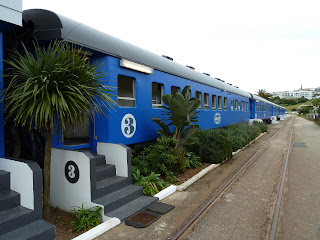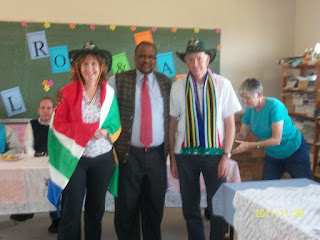(Please scroll down for the blog photos, thanks)
We left Kimilili on 19th November with some mixed emotions. It’s never easy to say goodbye. But we were really looking forward to having a hot shower! We had a longish wait at Kitale airfield, but one thing we’ve become really good at is waiting! The airport building, the size of a small bungalow, contained toilets, office, check-in, security and control tower, together with a first-class lounge (a three piece suite) and economy (ordinary chairs). The baggage reclaim was the grass outside. Back in Nairobi
On the Sunday we visited the David Sheldrick elephant orphanage – sooo cute! And the giraffe centre at Langata, very touristy but giraffes are my (Jane’s) favourite animal so I had to see them.
On Monday we were collected at 7:30 by Kamel, our very knowledgeable guide and driver for the next week. We had an 8-seater Toyota Land Cruiser all to ourselves. We left Nairobi in drizzling rain for the long drive to Samburu National Park Mount Kenya , due to the low cloud, but the road was surprisingly good and we arrived in time for lunch. We almost had the place to ourselves, there were only two other parties there when we arrived. Such a contrast to the previous five weeks, the lodge was very comfortable, the food good, and there was even a swimming pool. It occurred to us that visitors who spent their whole time in Kenya at such safari lodges would gain a very different experience of Kenya Nairobi
Our next stop was The Ol Pejeta Conservancy, (via a ‘tourist stop’ at the Equator line) where we stayed in another posh tent, overlooking a water hole where a group of giraffes and zebras were waiting for us. We could also see a family of warthogs with 4 babies, impala, and in the distance, a rhino and 2 silver-backed jackals. That afternoon our game drive took in more gazelles, water bucks, a small pride of very sleepy lions, eagles, buffalo, white and black rhino, then, on the way back, a group of elephants with a baby only a couple of days old. The weather there turned cooler again and we were very appreciative of the hot water bottles that the housekeeper had provided us with.
The next day we moved on to Lake Nakuru Mara River
Sunday 27th November, the long-awaited date (by me anyway!) of our return to England Nairobi in time for a visit to the Karen Blixen Museum Nairobi
Now we are back in England and suddenly it’s Christmas everywhere – we hadn’t given it a thought in Africa . (Actually there was one motorcycle taxi driver in Kimilili who always wore a Santa hat). Apologies if this sounds trite, but my time in Africa has reduced my enthusiasm for all the things I apparently ‘must have’ and ‘must do’. The thing we are both most looking forward to is seeing our families again.
 |
| Lake Nakuru |
 |
| Kamel our excellent driver and guide |
 |
| A sausage tree |
















































